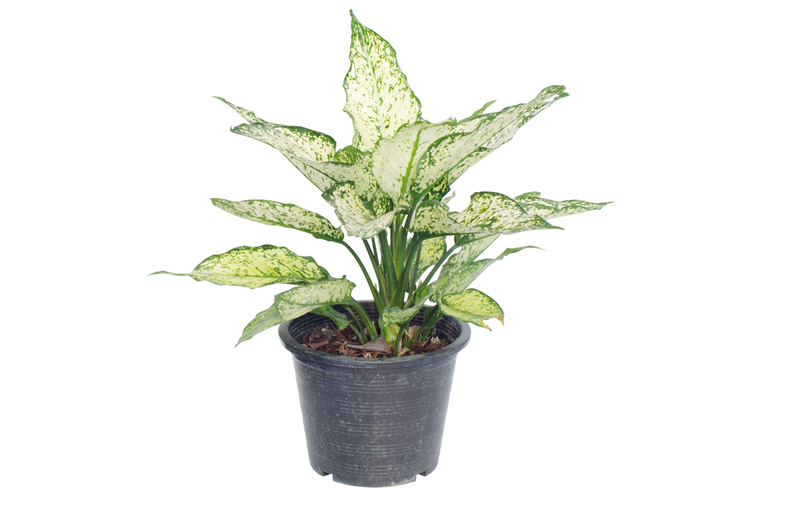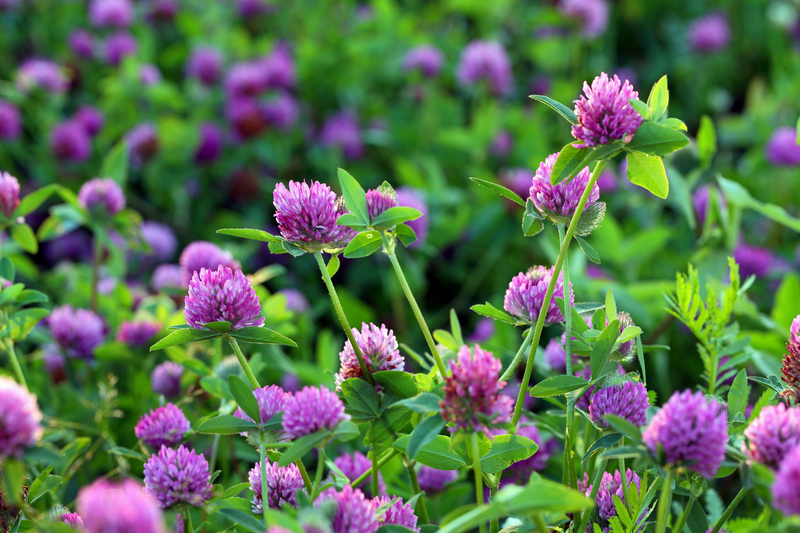Secrets to Luxuriant and Flowering Orchids
Posted on 15/06/2025
Secrets to Luxuriant and Flowering Orchids
Are you mesmerized by the enchanting beauty of orchids but feel intimidated by their reputation of being difficult to grow? Cultivating luxuriant and flowering orchids is not an unattainable dream. Orchids can thrive with the right care, rewarding you with dazzling blooms and elegant foliage. This comprehensive guide will uncover the top secrets to luxuriant and flowering orchids, equipping both beginners and seasoned enthusiasts with expert tips and actionable advice.

Understanding Orchid Growth and Flowering
Before you can unlock the secrets of luxuriant orchids, it's crucial to understand what makes these exotic plants tick. Orchids hail from diverse environments, each with its unique temperature, light, and moisture needs. Most popular varieties, such as Phalaenopsis and Cattleya, are epiphytic, meaning they grow on trees in nature and not in soil. Their ability to bloom profusely depends on the delicate balance between their environment, care routine, and nutrient cycle.
Key Orchid Types for Home Gardeners
- Phalaenopsis (Moth Orchids): Renowned for their ease of care and long-lasting blooms.
- Cattleya: Famous for their vibrant colors and strong fragrance.
- Dendrobium: Adaptable to various climates and periods of rest and growth.
- Oncidium: Nicknamed "dancing ladies," beloved for their profuse, small flowers.
- Vanda: Appreciated for their striking, open blooms and aerial roots.
Choosing the Right Orchid for Success
One of the primary secrets to luxuriant orchid blooms lies in selecting the best type for your home conditions. Consider:
- Lighting: Do you have bright, indirect light available? If yes, Moth Orchids are ideal. For east or west windows, Dendrobiums and Oncidiums also flourish.
- Humidity: Orchids love 40-70% humidity. In arid climates, look for more drought-tolerant species or use humidity trays and pebble trays.
- Temperature: Ensure that nighttime and daytime temperatures mimic their natural habitat, usually 60-75?F (16-24?C).
Remember: Healthy orchids start with the right match between plant and home environment.
Essential Care Tips for Luxuriant Orchids
The path to orchid blooms is paved with consistent, attentive care. Let's delve into the most important cultural tips.
1. Optimal Light Exposure
- Indirect Bright Light: Most orchids prefer filtered sunlight. South or east-facing windows are ideal. Avoid harsh midday sun, which causes leaf scorch and reduces blossoms.
- Leaf Color as a Guide: Healthy orchid leaves are medium green, sometimes with a reddish tint. Dark green means too little light, yellowish means too much.
- Artificial Lighting: Fluorescent or LED grow lights can supplement inadequate natural light for year-round blooms.
2. Proper Watering Techniques
- Let the Medium Dry Slightly: Over-watering is a common cause of root rot. Wait until the potting mix is almost dry before watering again.
- Water Quality: Use tepid rainwater, distilled, or filtered water. Salts in tap water can build up and damage fragile roots.
- Drain Thoroughly: Always allow water to escape from the pot's bottom. Never let your orchid sit in water.
- Morning Watering: Water early to allow leaves to dry before nighttime, minimizing risk of fungal disease.
3. Humidity and Air Circulation
- High Humidity: Orchids flourish with relative humidity between 40-70%. In dry homes, place a shallow tray filled with water and pebbles near your plant.
- Good Air Movement: Prevents pests, disease, and encourages strong growth. Use small fans for gentle movement, avoiding cold drafts.
- Misting: Lightly mist daily in dry seasons, but never let water pool in leaf crevices.
4. Fertilization for Robust Growth
- Regular Feeding: Orchids aren't heavy feeders, but they need consistent nutrition. Use a balanced 20-20-20 orchid fertilizer diluted to half strength.
- Feed "Weakly, Weekly": Apply diluted fertilizer every week during active growth, tapering off during dormant months.
- Flush With Water: Once a month, pour clear water through the pot to remove accumulated salts.
- Support Flowering: Use a bloom-boosting formula (higher in phosphorus) as buds form to encourage abundant blossoms.
5. The Perfect Potting Mix
- Bark-Based Blends: Most epiphytic orchids require coarse, chunky bark mixes, allowing air to reach their roots.
- Sphagnum Moss: Excellent for moisture retention but should be loose. Overly compacted moss leads to root suffocation.
- Repot Regularly: Refresh your orchid's potting medium every 1-2 years to prevent breakdown and rot.
6. Potting and Repotting Techniques
- Choose Proper Pots: Transparent plastic pots let you monitor root health. Always pick pots with ample drainage holes.
- Root Trimming: When repotting, remove mushy or brown roots using sterilized scissors. Healthy roots are white or green and firm.
- Do Not Bury Stems: Keep the plant's crown above the medium to prevent rot.
Encouraging Orchids To Bloom Prolifically
Many growers struggle to induce flowering. These proven techniques will help you enjoy abundant orchid blooms season after season.
Provide a Nighttime Drop in Temperature
- Bloom Trigger: Many species, especially Phalaenopsis, need a 10-15?F drop between day and night (i.e., 75?F day/60?F night).
- Timing: Begin in autumn for best flower spikes. Place orchids near a slightly open window or in a cooler room overnight.
Limit Nitrogen Before Flowering
- Phosphorus Boost: Use a fertilizer higher in phosphorus (like 10-30-20) as soon as you see a flower spike forming.
- Reduce Nitrogen: Excess nitrogen promotes leafy growth at the expense of flowers.
Respect Dormancy Periods
- Resting Orchids: Species like Dendrobium and Cymbidium require a cool, dry rest period after blooming. Limit water and fertilizer during this time.
- Resume Care: Once new growth or roots appear, return to your regular care regimen.
Preventing Common Orchid Problems
Even the best-kept orchids can encounter issues. Here's how to keep your luxuriant orchids free from stress and disease:
Pest Management
- Inspect Regularly: Check for mealybugs, scale, spider mites, and aphids. Isolate affected plants promptly.
- Gentle Cleansing: Remove pests with neem oil, insecticidal soap, or a cotton swab dipped in alcohol.
Disease Prevention
- Prioritize Airflow: Good air circulation and dry foliage reduce fungal and bacterial outbreaks.
- Prune Dead Material: Remove yellowing leaves and spent flower spikes to prevent rot or disease spread.
- Disinfect Tools: Always use sterilized scissors when cutting roots or stems.
Root and Crown Care
- Monitor for Rot: Bark that remains soggy or a foul odor signals root rot. Repot immediately if needed.
- Watch for Pests: Tiny bugs often hide at the base of leaves or in potting media--remove at once.
Advanced Secrets for Expert Growers
Ready to take your orchid gardening to the next level? Explore these advanced strategies for dazzling displays and record-breaking blooms.
Experiment With Mounting Orchids
- Natural Presentation: Mimic their wild habitat by mounting orchids on pieces of bark or cork.
- Watering Needs: Mounted orchids dry faster and require more frequent misting or dunking.
Practice Flower Spike Staking
- Support Heavy Blooms: Use bamboo stakes or florist's wire to gently guide spikes upward.
- Adjust Regularly: As spikes grow, re-tie loosely to accommodate movement and prevent snapping.
Cross-Pollinating for Unique Varieties
- Hand Pollination: Transfer pollen using a fine brush or toothpick to create your own orchid hybrids.
- Seed Pod Development: Seed propagation is slow and challenging, but can yield novel blooms if you're patient and adventurous.

Frequently Asked Questions
- Why aren't my orchids blooming? - Ensure they're getting enough light, temperature fluctuations, and the right fertilizer.
- When should I repot my orchid? - Every 1-2 years or when the potting mix breaks down or roots crowd the container.
- Can I use ice cubes to water orchids? - It's better to mimic their natural, warm rain; tepid water is healthier for roots.
Conclusion: Achieving Luxuriant and Flowering Orchids
Mastering the secrets to luxuriant and flowering orchids isn't as complex as it may seem. By providing tailored light, balanced moisture, periodic fertilization, and gentle attention, you can turn your orchids into breathtaking living art. Embrace patience, enjoy the process, and remember that every leaf and bloom is a reflection of your nurturing hand. Whether you're coaxing a stubborn Phalaenopsis into bloom or experimenting with rare species, these orchid growing secrets will ensure your plants remain a vibrant centerpiece in your home for years to come.
Ready to start your own orchid adventure? Apply these tips, observe your plant's unique needs, and celebrate every spike, bud, and bloom on your journey to luxuriant orchid blossoms!

